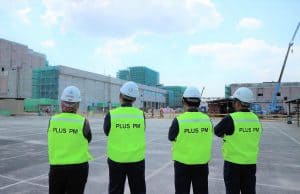High Rise Building Safety Evacuation – Frequently Asked Questions (FAQ)1/3
3月 30, 2015
People living in a high rise apartments or condominiums need to be prepared
in the event of a fire and other emergencies.
Knowing the right steps on how to react and familiarizing oneself
to the safety tips and escape planning in tall buildings are
very crucial in saving lives.
High rise buildings present several unique challenges not found in traditional
low-rise buildings; longer egress times and distance, evacuation strategies,
fire department accessibility, smoke movement and fire control.
The multiple floors of a high rise building create the cumulative
effect of requiring great numbers of persons to travel great vertical distances
on stairs in order to evacuate the building.
Tall buildings have garnered significant attention
in the fire safety world over the years.
The public, code bodies, local, regional and federal governments,
as well as the design, build, and ownership communities are all affected
by high rise building safety.
Local government organizations continue to provide resources to help
ensure occupant and property protection during the time of fire
in a high rise building.
High rise Building Fires: In 2007-2011,
is estimated to be 15,400 reported High rise structure fires per year resulted
in associated losses of 46 civilian deaths, 530 civilian injuries,
and $219 million in direct property damage per year.
An estimated 3% of all 2007-2011 reported structure fires were in High rise buildings.
Below are the frequently asked questions (FAQ) which may help you decide
how you react in an emergency situation.
1. Is high-rise building evacuation different from other buildings?
The multiple floors of a high-rise building create the cumulative effect of
requiring great numbers of persons to travel great vertical distances on stairs
in order to evacuate the building.
In the evacuation of the World Trade Center high-rise office towers following
the terrorist bombing in 1993, the tens of thousands of building
occupants successfully and safely traversed some
five million person-flights of stairs.
The physical demands made on occupants often exceed the capabilities of many.
In addition, the process of evacuating some of the largest high-rise buildings
in the world may take upwards of two hours.
The fire and life safety systems installed in high-rise buildings today,
including automatic fire sprinkler protection, are designed to control a fire
and therefore lessen the need to evacuate all occupants.
In a typical scenario, the occupants of the fire floor and the floors
immediately above and below it should immediately use the exit stairs to
descend to a floor level that is at least several floors below the fire floor,
and await further instruction from safety officials.
2. What are the key elements of emergency preparedness?
Early warning (typically through an alarm or voice communication system),
adequate means of egress (exit routes) and occupant familiarity with the plan
through knowledge and practice.
Are building owners or operators required to hold regular emergency drills
for occupants?
Although not mandated for all buildings, NFPA 101, Life Safety Code,
requires that workplaces, healthcare facilities, educational institutions
and other occupancies provide evacuation/relocation plan information
and routinely schedule and hold drills when practicable.
3. How are emergency instructions tailored to the actual emergency event
and communicated to the building occupants?
High-rise building fire alarm systems are required to have emergency voice
communication capability.
Trained emergency personnel assess the emergency and can then broadcast
a variety of specific messages to the occupants. The occupants believed
to be in the greatest potential danger are instructed to use the exit stairs
to begin their descent.
Occupants of other floors might be instructed to stay where they are and await
further instruction.
In these cases, only occupants on the fire floor and the floors immediately above
and below typically receive the message.
Should the scale of the emergency increase, the announcements can be expanded
to include additional floors, or if need be, the entire building.
to be continued…
関連記事
ほかのBlogを見る



